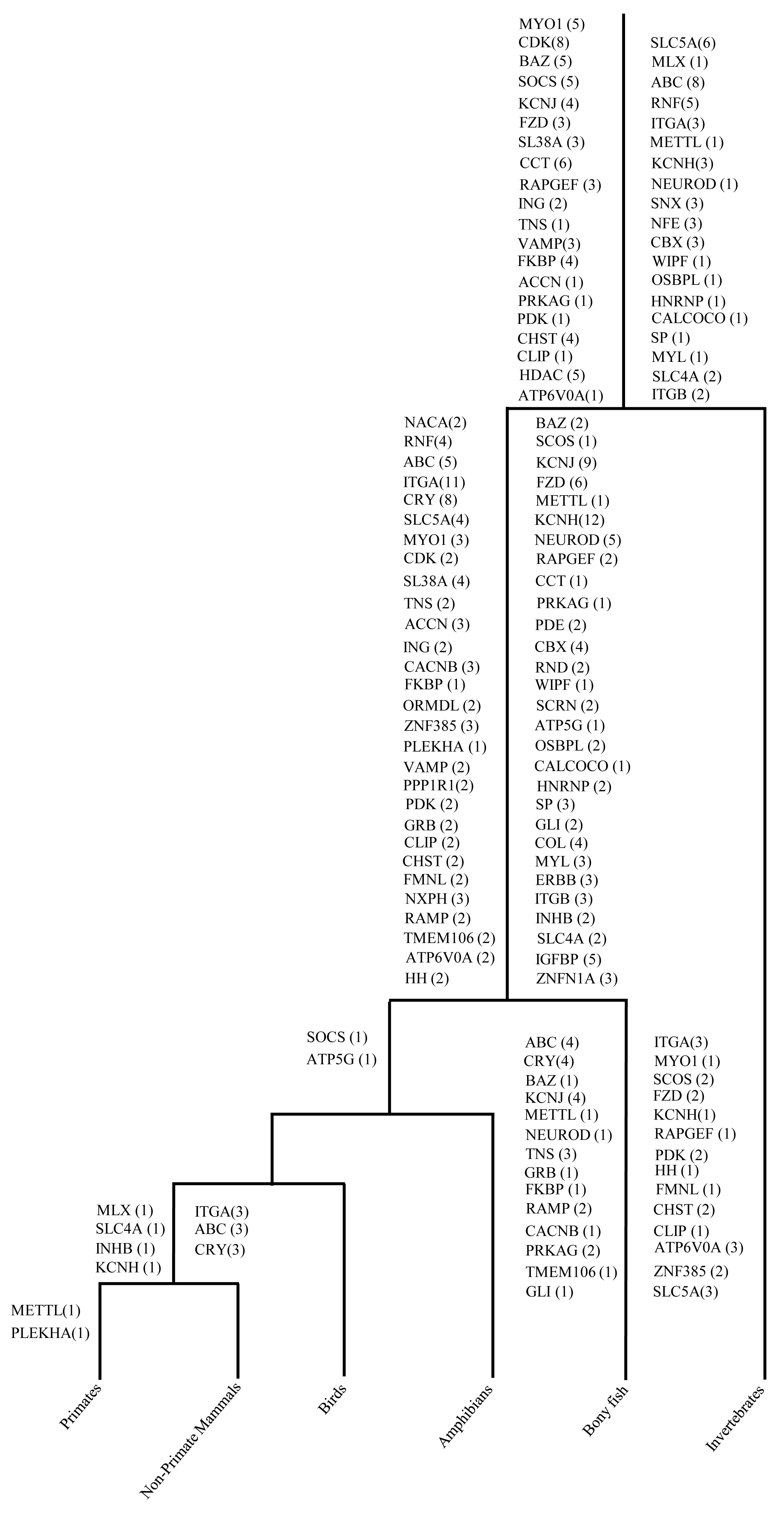Age estimates of duplications: HOX Paralogon
The branching order within the phylogenetic tree was used to estimate the time window of gene duplication events relative to the divergence of major taxa of organisms. This method of relative dating does not rely on the assumption of a constant rate of evolution. Therefore the process is sensitive to the varying rate of evolution in different branches of the tree (Hughes 1998). For 62 HOX linked multigene families (in total 362 genes) residing on Hsa 2/7/12/17, 113 duplication events were detected before vertebrate–invertebrate split. 172 duplications were detected after vertebrate–invertebrate and before tetrapod– bony fish divergence whereas only seventeen tetrapod specific duplication events were detected (Ambreen et al. 2014).

Figure 1: The relative timing of duplication events that expanded the multigene families residing on human HOX paralogon.
Useful references: